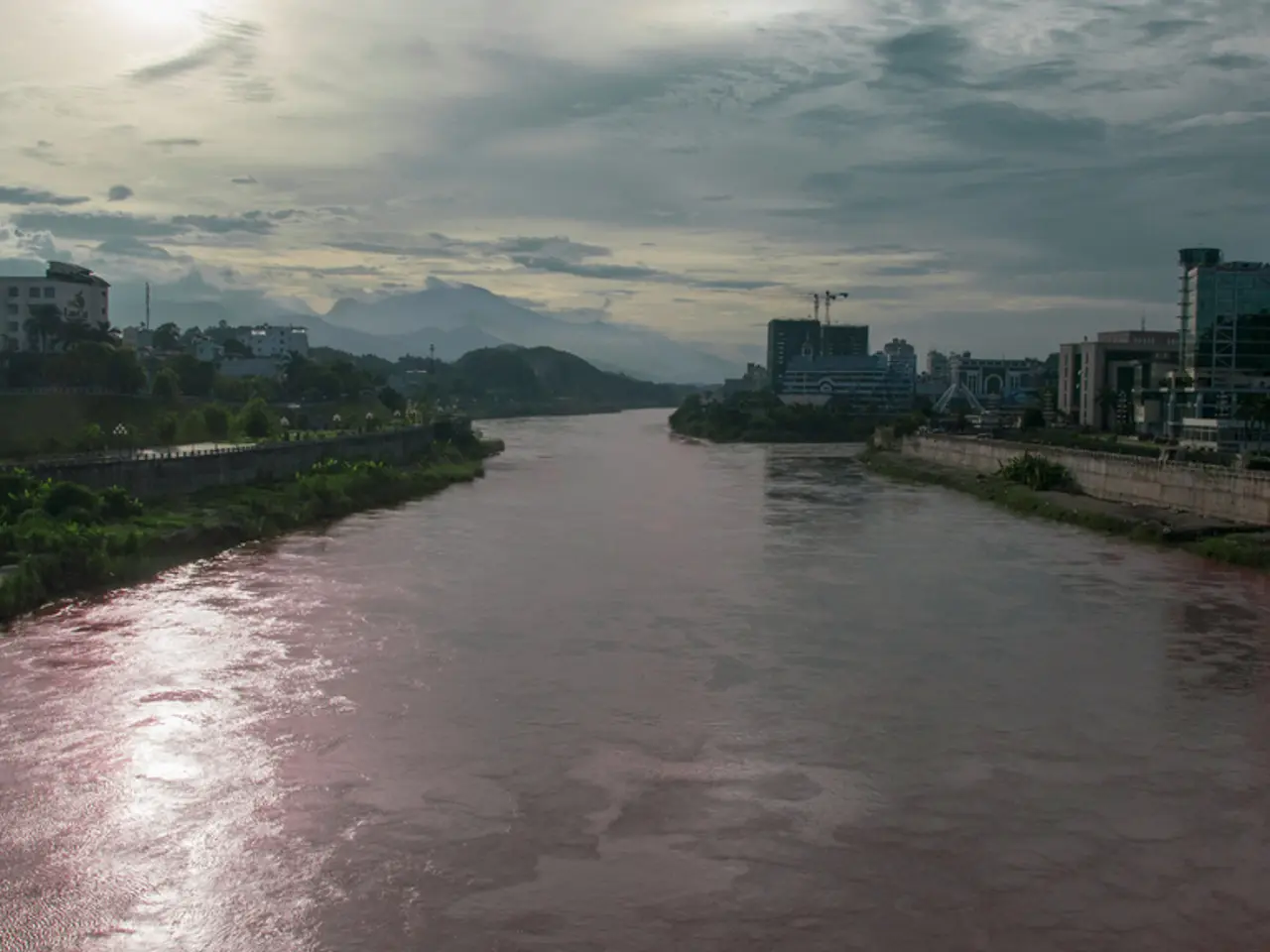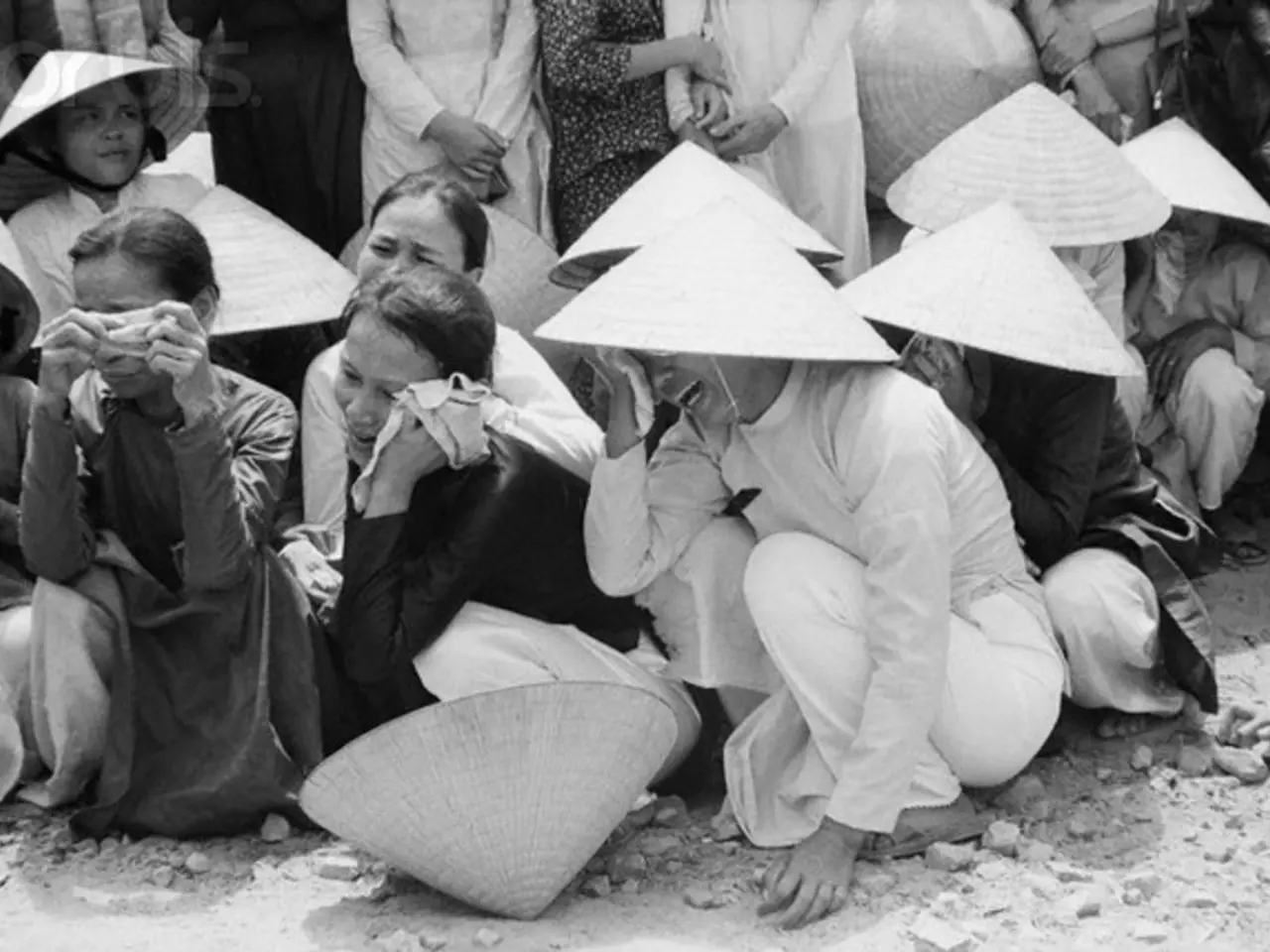Water level decrease in Ganga and Yamuna rivers of Prayagraj and Varanasi fuels escalated flood relief efforts
Intensified Flood Relief Efforts in Prayagraj and Varanasi
As of early August 2025, flood relief efforts have intensified in Prayagraj and Varanasi due to the recent rise and subsequent receding of the water levels in the Ganga and Yamuna rivers. The current situation includes ongoing cleanup operations, significant relief distribution, and attention to affected areas.
River Levels and Flood Status
The water levels of the Ganga and Yamuna in Prayagraj have been falling below the danger mark as of August 8, with the Yamuna at 82.77 meters (Naini) and the Ganga varying between 81.84 and 82.5 meters at key measuring points [1]. Earlier, around August 4, floodwaters in Prayagraj had risen nearly 1 meter above the danger level, submerging 84 ghats, roads, and residential areas, displacing thousands [2][3]. In Varanasi, the Ganga surged causing flooding of residential areas amid heavy rainfall around August 7, severely impacting daily life and stranding many residents who depended on boats for movement [2][4]. Over 1,469 farmers suffered crop losses with 327.9 hectares inundated, displacing 6,583 people in the district [2][4].
Relief and Cleanup Operations
The Prayagraj Municipal Corporation has launched extensive cleaning operations in flood-affected areas, deploying about 3,000 sanitation workers, plus additional staff for partially affected zones. Silt removal is underway using water pressure machines as floodwaters recede [1]. In Varanasi, 20 relief camps serve displaced persons; more than 17,000 food packets were distributed on a single day, supported by 50+ boats used for rescue and relief [2][4].
Rescue and relief operations are conducted by government agencies (NDRF, SDRF, PAC) continuously, with teams patrolling flood zones and moving stranded residents to safety. Essential supplies are being provided to affected families [3][4]. Chief Minister Yogi Adityanath and other officials have taken active roles, overseeing relief work, distributing supplies, ensuring hygiene in receding flood zones, and promising no financial constraints will hinder aid delivery [5]. About 2,610 boats and motorboats have been deployed across 36 affected districts including Prayagraj and Varanasi for extensive relief distribution [5].
Affected Areas
Prayagraj saw severe impacts on housing, roads, ghats, and public utilities as previously flooded areas are being cleaned and rehabilitated [1][2]. Varanasi’s residential neighborhoods suffered inundation, with large-scale displacement and crop losses affecting both urban and agricultural communities [2][4].
Additional Measures
After cleaning, bleaching powder is being used, followed by the spraying of sodium hypochloride to protect against flies, mosquitoes, and diseases they cause. Pesticides are being sprayed in affected areas. In Varanasi, cleaning and spraying operations are being carried out on a war footing where the flood water is decreasing [4]. The famous Ganga Aarti at Dashashwamedh Ghat is being performed on the roofs due to the decreasing water levels [4]. Cremations at Manikarnika and Harishchandra Ghat are also being conducted on high platforms and roofs [4].
Uttar Pradesh Minister of State for Registration, Stamp, and Court Fee Ravindra Jaiswal visited several relief camps to assess the well-being of flood victims [6]. Drones, sourced from the Agriculture Department, are being used to spray pesticides where ground access is difficult [4]. Teams of district administration, police, NDRF, and water police are working jointly in the flood relief efforts [4]. Shivam Agrahari of Ganga Seva Nidhi stated that it will take time for life on the ghats to return to normal as the water level decreases [4].
In summary, floodwaters in Prayagraj and Varanasi initially rose sharply but have recently receded below danger levels, prompting intensified cleanup and relief efforts. Thousands remain displaced, with government and rescue teams actively engaged in rescue, medical aid, food distribution, and sanitation operations to restore normalcy and support affected residents [1][2][3][4][5].
References: [1] https://www.hindustantimes.com/lucknow/prayagraj-water-level-falls-below-danger-mark-says-official/story-5cOgCtZH5xPXz0R5Z8KUJK.html [2] https://www.indiatoday.in/india/story/uttar-pradesh-floods-prayagraj-varanasi-water-level-rises-1-meter-above-danger-mark-1844414-2022-08-04 [3] https://www.hindustantimes.com/lucknow/prayagraj-flood-situation-worsens-84-ghats-submerged-1-lakh-people-in-danger/story-8qEeKYe76GmL0N587ZJp9L.html [4] https://www.thehindu.com/news/national/other-states/varanasi-under-water-as-ganga-floods-residential-areas/article65570661.ece [5] https://www.financialexpress.com/india-news/uttar-pradesh-floods-cm-yogi-adityanath-says-no-financial-constraints-to-hinder-aid-delivery/2360499/ [6] https://www.hindustantimes.com/lucknow/uttar-pradesh-minister-ravindra-jaiswal-visits-flood-relief-camps-in-prayagraj/story-E9lJvEo4x1Q1eM8KQ8U1SL.html
- In the midst of inundated agricultural land and displaced farmers, the Indian government is intensifying its support in the flood-stricken regions of Prayagraj and Varanasi, working alongside general news outlets to cover the current status.
- Acknowledging India's rich cultural heritage, local officials have made arrangements for the iconic Ganga Aarti to be performed on the roofs of Dashashwamedh Ghat, in a moving show of resilience as floodwaters subside.
- As the government continues to focus on flood relief efforts, cricket, another vital piece of Indian culture, might find its way back to the region's fields, serving as a symbol of unity and renewed hope for the community.








